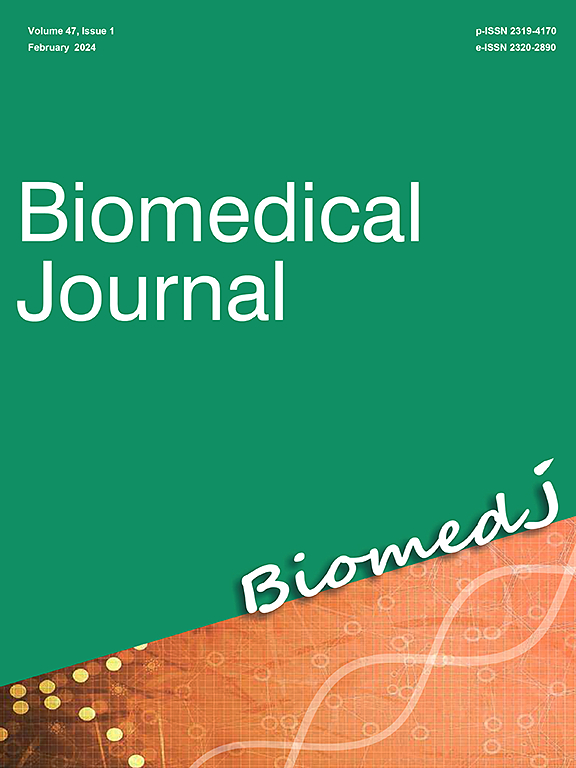临床超极化磁共振成像的进展、挑战和未来前景:全面回顾。
IF 4.4
3区 医学
Q2 BIOCHEMISTRY & MOLECULAR BIOLOGY
引用次数: 0
摘要
超极化(HP)磁共振成像(MRI)是一个突破性的成像平台,正从研究走向临床实践,为实时、无创的代谢成像提供了新的可能性。这篇综述探讨了高压磁共振成像的最新进展、挑战和未来方向,强调了它对转化研究和临床应用的变革性影响。通过采用溶解动态核极化 (dDNP)、对氢诱导极化 (PHIP)、可逆交换信号放大 (SABRE) 和自旋交换光学泵浦 (SEOP) 等技术,HP MRI 实现了增强的核自旋极化,从而能以超高的灵敏度实现代谢途径的体内可视化。通过先进的脉冲序列、栓剂跟踪和动力学建模等创新解决方案,目前所面临的挑战,如有限的成像窗口、复杂的预扫描方案和数据处理困难等,都得到了解决。我们着重介绍了 HP MRI 技术的发展,重点是通过揭示传统 MRI 和正电子发射断层扫描 (PET) 无法实现的代谢过程,该技术有望彻底改变疾病诊断和监测。主要进展包括开发了新型示踪剂,如[2-13C]丙酮酸和[1-13C]-α-酮戊二酸,并改进了数据分析技术,扩大了临床代谢成像的范围。未来的前景强调整合人工智能、标准化成像方案以及开发新的超极化制剂,以提高可重复性并扩展临床能力,尤其是在肿瘤学、心脏病学和神经学领域。最终,我们希望 HP MRI 成为临床实践中动态代谢成像的标准化模式。本文章由计算机程序翻译,如有差异,请以英文原文为准。

Advancements, challenges, and future prospects in clinical hyperpolarized magnetic resonance imaging: A comprehensive review
Hyperpolarized (HP) magnetic resonance imaging (MRI) is a groundbreaking imaging platform advancing from research to clinical practice, offering new possibilities for real-time, non-invasive metabolic imaging. This review explores the latest advancements, challenges, and future directions of HP MRI, emphasizing its transformative impact on both translational research and clinical applications. By employing techniques such as dissolution Dynamic Nuclear Polarization (dDNP), Parahydrogen-Induced Polarization (PHIP), Signal Amplification by Reversible Exchange (SABRE), and Spin-Exchange Optical Pumping (SEOP), HP MRI achieves enhanced nuclear spin polarization, enabling in vivo visualization of metabolic pathways with exceptional sensitivity. Current challenges, such as limited imaging windows, complex pre-scan protocols, and data processing difficulties, are addressed through innovative solutions like advanced pulse sequences, bolus tracking, and kinetic modeling. We highlight the evolution of HP MRI technology, focusing on its potential to revolutionize disease diagnosis and monitoring by revealing metabolic processes beyond the reach of conventional MRI and positron emission tomography (PET). Key advancements include the development of novel tracers like [2–13C]pyruvate and [1–13C]-alpha-ketoglutarate and improved data analysis techniques, broadening the scope of clinical metabolic imaging. Future prospects emphasize integrating artificial intelligence, standardizing imaging protocols, and developing new hyperpolarized agents to enhance reproducibility and expand clinical capabilities particularly in oncology, cardiology, and neurology. Ultimately, we envisioned HP MRI as a standardized modality for dynamic metabolic imaging in clinical practice.
求助全文
通过发布文献求助,成功后即可免费获取论文全文。
去求助
来源期刊

Biomedical Journal
Medicine-General Medicine
CiteScore
11.60
自引率
1.80%
发文量
128
审稿时长
42 days
期刊介绍:
Biomedical Journal publishes 6 peer-reviewed issues per year in all fields of clinical and biomedical sciences for an internationally diverse authorship. Unlike most open access journals, which are free to readers but not authors, Biomedical Journal does not charge for subscription, submission, processing or publication of manuscripts, nor for color reproduction of photographs.
Clinical studies, accounts of clinical trials, biomarker studies, and characterization of human pathogens are within the scope of the journal, as well as basic studies in model species such as Escherichia coli, Caenorhabditis elegans, Drosophila melanogaster, and Mus musculus revealing the function of molecules, cells, and tissues relevant for human health. However, articles on other species can be published if they contribute to our understanding of basic mechanisms of biology.
A highly-cited international editorial board assures timely publication of manuscripts. Reviews on recent progress in biomedical sciences are commissioned by the editors.
 求助内容:
求助内容: 应助结果提醒方式:
应助结果提醒方式:


